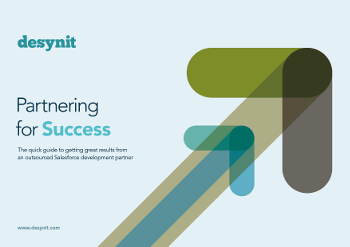‘We need a strategy for digital!’
Uh oh. The alarm bells are ringing. The thing is, having a ‘strategy for digital’ nowadays is a little like having a strategy for people. Or problems. Or processes. In the same way that these things don’t really make sense as a separate line item in your strategy document, neither does ‘digital’.
However, this can pose a real issue if you are one of the many businesses that began in a less digital-era than now (let’s say pre-2010). You almost certainly didn’t start off as a ‘digital business’, but rather you are now you are in a position of retro-fitting your established strategy and processes to a digital platform.
The problems really starts when you start ‘applying digital’ to your existing business model, one separate piece at a time. For example, you might start with your ‘digital marketing strategy’, but leave your ‘digital customer service strategy’, or your ‘digital billing strategy’ until later. Without having the bigger picture across all of these functions, you’ll struggle to maintain a common thread that works at a business-wide level, strategically speaking.. Or in plainer words, you’ll end up with a complete hotch-potch of non-joined up systems that don’t work together
What you need is a digital business strategy.
Sounds like nonsense business-speak? Here’s a real-world example to try to explain a little better.
The story of a company that rebuilt their business end-to-end on Salesforce
Back in 2008, this utilities business was running their entire operation off a few spreadsheets. What they lacked in technology, however, they made up for in terms of vision. In fact they had absolute clarity that they wanted to reach a point in which they could deliver a world-class customer experience, and they knew the answer was digital.
Fast forward to today: They they have transformed their business by making every one of their customer touchpoints and operational processes digital. Smart meters, real time feedback from their field engineers, monitoring of supply, customer support… it’s all on one platform (Salesforce.com). So now they can record reliable data, lots and lots of it, they can make much better operational decisions. That means that they can understand the ebb and flow of supply and demand on their resources. In turn this means they can move into offering effective resource monitoring and feedback. Which means they can keep their customers in the loop, in real-time, all the time. Which, all in all, allows them to deliver that world-class customer service they had in mind from the start
The mistake they never made
The reason this utilities business made a successful transition was this: they didn’t try to have a different digital strategy for different parts of their business. They had one vision for digital, and it was a holistic one.
They didn’t just look at moving their marketing and customer service onto a digital platform, while leaving their service delivery and operational processes on strictly analogue terms. They understood that the great customer experience they were aiming for was all about offering their customers a great and efficient service. It wasn’t about offering their customers a flaky service, teetering on top of dodgy operations. They understood that applying a ‘digital marketing strategy’ alongside a non-digital operational strategy, really just adds up to giving your customers the opportunity to complain about you later on Twitter.
It all starts with strategy
If there is a moral to this tale, it is therefore that having a really clear vision of where you want to get to is key. Once you know where you want to get to, you can devise a workable strategy to get you there. That’s the approach we take at Desynit. We’ll start by understanding where you want to get to and why, before we get to work on the ‘how’.


